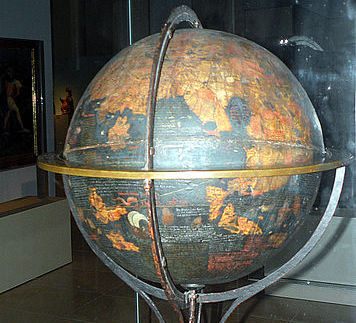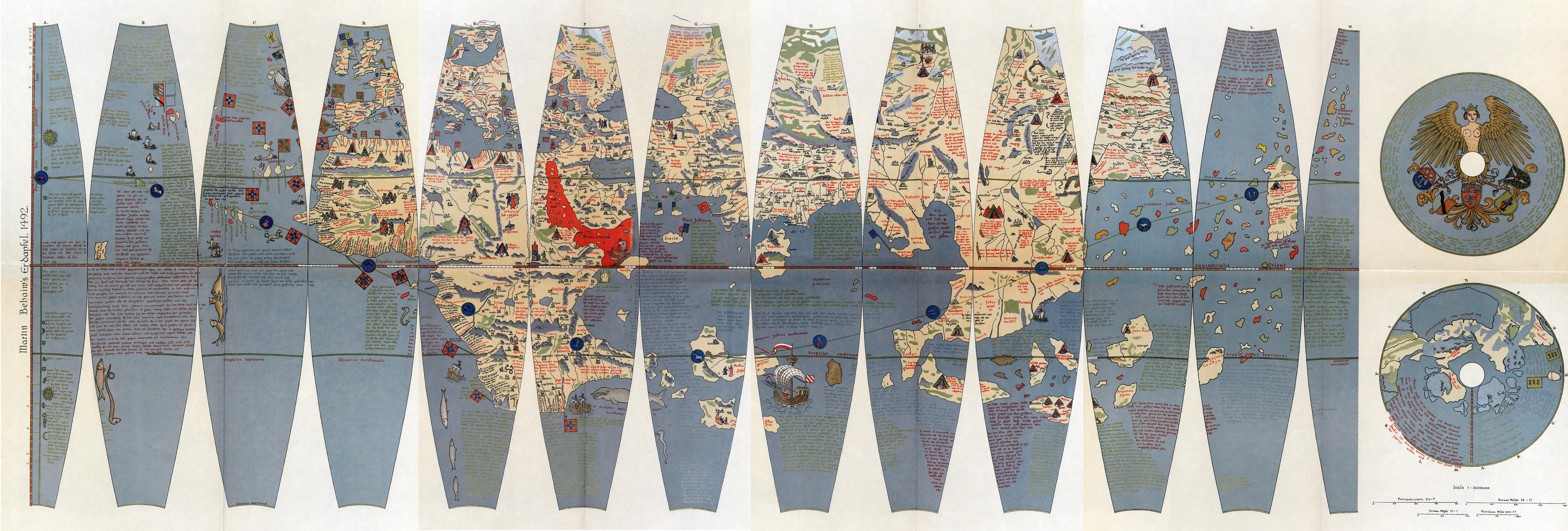Behold the Erdapfel, the World’s Oldest Surviving Globe
It’s got the beauty, but not the brains.

If the world’s oldest surviving globe has taught us anything, it’s that just when we think we’re starting to figure out how the world works, turns out we barely know anything at all.
Known formally as the Erdapfel (literally “Earth Apple,” or in some colloquial translations “potato”), the oldest globe is an impressive and beautiful artifact, even if its cartographic science is a little off. The Erdapfel dates back to 1492, and is far from the first globe ever created, but it is, so far, the oldest discovered terrestrial globe still in existence.
Round representations of the Earth go back to Ancient Greece, and the earliest spherical maps of the world were being created in the Islamic world in the 13th century or earlier. But none of those are thought to survive. Other than descriptions and flattened maps that would have covered earlier globes, the Erdapfel is the oldest remaining artifact of its kind.

Also called the Behaim Globe, the construction of the Erdapfel is credited to the 15th century polymath Martin Behaim. Behaim, a German, was a well-known geographer, merchant, mariner, and philosopher. It was after his travels across the Known World, to places such as Portugal and the West Coast of Africa, that he returned to his native Nuremberg, where he convinced the city council of his hometown to commission a globe from him.
Behaim may get the credit, but it actually took a number of artisans to complete the project. Unsurprisingly, the Erdapfel’s construction is a fair bit more elegant than the cardboard globes of today. It’s made of hardened strips of linen that were formed around a clay ball and then pulled away. These delicate halves were then joined around a wooden frame.
The map art on the surface of the globe took a small team to complete. Foremost among them was the artist Georg Glockendon who, along with the painter Hans Storch, did the actual illustration work. Later, a scribe came in to add some 2,000 place names.

Behaim led the construction and provided the cartographic information that informed the illustrations. He took his vision of the world from a number of sources, ranging from the historic geography of Ptolemy to the explorations of Marco Polo. While the globe turned out to be quite beautiful as an object d’art, its accuracy as a geographic instrument was out of date even in 1492.
The Erdapfel is covered in a cornucopia of beautiful little illustrative details, including over 100 miniature objects and figures. These include flags; saints; kings on their thrones; animals such as elephants, camels, and parrots; fantastic beasts such as a sea-serpent and a mermaid; and boats that share the seas with painted fish.
As to the actual mapped aspects, there’s pretty much just one large land mass, representing a Eurasian continent, surrounded by islands and ocean. The measure of the coasts and placement of major geographic features were inaccurate even by the standards of the day, and the globe also featured such elements as the phantom Saint Brendan’s Isle, a long-rumored, mythical island that never existed.

Still, Christopher Columbus would not return from his American expedition until a year after the creation of the Erdapfel. In its moment, Behaim’s globe could pass as not wholly unrealistic.
Behaim gave the globe to the Nuremberg city council, which held onto it until the 16th century, when they finally gave it back to the rather disinterested Behaim family, who put it in storage. The family’s apathy may have ultimately saved the Erdapfel, however, as it remained essentially forgotten until the 19th century, when later generations rediscovered the artifact. Behaim’s descendants lent the globe to the German National Museum in Nuremberg in the early 20th century, and in 1937, it was purchased for the museum at the behest of Adolf Hitler himself, who felt that such an important German artifact should remain in the country.
Since then, the Erdapfel has remained in the hands of the German National Museum. Today, the museum is attempting to create a digital record of the globe’s surface, now darkened from centuries of age and multiple restoration attempts, to share online. Even if Behaim’s globe remains a poor example of cartography, it continues to live on as a strange and lovely vision of the world as we once thought we knew it.










Follow us on Twitter to get the latest on the world's hidden wonders.
Like us on Facebook to get the latest on the world's hidden wonders.
Follow us on Twitter Like us on Facebook